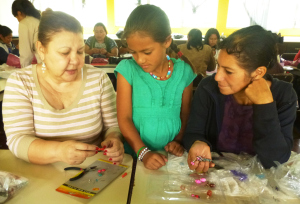Reflections: Half the Sky
For anyone who keeps up with Nicholas Kristof’s journalism, some of the stories that he brings up in the book will be very familiar and the topics certainly will not come as a surprise. I especially enjoyed learning more about Edna Adan, a bold and compassionate woman from Somaliland who I had read about a few times in Kristof’s New York Times op-ed columns. The stories of the women and girls featured are powerful, but at the surface can overwhelm the reader into feeling powerless to these issues.
This feeling does not last long however, as Kristof and WuDunn highlight not only several ways to make a difference, but also in getting past the emotional tug of the stories. Half the Sky’s strongest argument can be best expressed by this excerpt from chapter fourteen, “The strongest argument we can make to leaders of poor countries is not a moral one but a pragmatic one: If they wish to enliven their economies, they had better not leave those seams of human gold buried and unexploited.”
The tone of the book is set right away with the story of Srey Rath, a teenage girl from Cambodia who was sold into a brothel against her will. Her story is followed by many more that bring to light the various forms of violence and oppression against women. Yet a blend of compassion and pragmatism dominates each story in such a way that the “business case” for women’s empowerment cannot be ignored.
In chapter two the authors assert, “People get away with enslaving village girls for the same reason that people got away with enslaving blacks two hundred years ago: The victims are perceived as discounted humans.” Any type of oppression directed to a specific group can be brought back to this same theme: whether categorized by gender, religion, ethnicity, etc., they are considered inferior and the valuable contributions that they can make are lost or diminished.
At the end of the day, a country with a healthy and educated population, in which people from both genders have access to the opportunities and incentives to thrive economically, will experience greater economic advancement. While the book didn’t draw attention to the hurdles to equality that Latin American women specifically face in their countries, the universality of increased education and job opportunities and access to health care makes this book relevant globally.
Saima’s story, highlighted in chapter eleven, resonated most closely with my experience in Honduras. Saima is a Pakistani woman who witnesses a dramatic shift in her relationship with her husband, her standard of living, and her own standing within her household after participating in a local microfinance institution. When speaking with a client’s husband once, I asked him for his opinion of his wife’s participation with Adelante. At the start, he was not a big fan, and especially did not like the idea of his wife taking out a loan with a group of women. But once her business took off, he was able to leave a poorly paid job at a local factory to work under her direction. When we had spoken two years ago, the difference was clear – her business was producing four times what he used to earn at the factory.
Still, not all husbands are willing to let their wives make that decision. On a field visit in Valle last year, my co-worker insisted we visit one woman, who at the last minute, had decided not to take out a loan after all. She had been planning on keeping her participation from her husband but when he found out, he made it clear that she should not join. Denis had just opened the assembly in her community, and hopes that as her husband sees the progress that other women make, he will value the contribution that his wife could make to the household with her own business.
It is now well overdue for us to acknowledge that the concept of women’s empowerment goes far beyond supporting women by creating positive change in the entire community. Men, women and children are all able to benefit from the changes we witness when women receive educational and employment opportunities.


